Social Media … Targeted Marketing Until They Turn on You

The world of new media – widgets and social applications – it’s a great big beautiful marketing hunting ground.
Imagine people flocking to Web 2.0 locations where they blog. They upload/download audios/videos of specific interest to them.
They congregate at business/special interest web sites to gain information and be entertained.
They Tweet.
They gather daily/nightly in online communities to exchange information, news and just hang out.
They leave a digital fingerprint of who they are, who/what they like/don’t like, what they do/don’t do, where they go/don’t go and when they do all this stuff.
Imagine how you can monetize, mine all that activity!
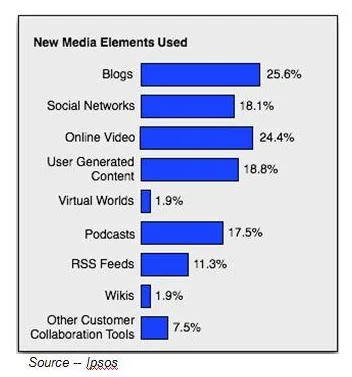 Accuracy Counts – With the Internet and Web, marketing has become increasingly measurable and accurate. Prospects can be pinpointed by the blogs they visit, social networks they regularly frequent and the content they view. Sophisticated and automated web tools make it fast, easy and precise to pick customers out of a crowd.
Accuracy Counts – With the Internet and Web, marketing has become increasingly measurable and accurate. Prospects can be pinpointed by the blogs they visit, social networks they regularly frequent and the content they view. Sophisticated and automated web tools make it fast, easy and precise to pick customers out of a crowd.
As Jason Bourne noted, “Word in the ether was you’d lost your memory.”
Once you’re on the web, nothing is private for them … or you.
The profile can be so finite you can pick any prospective customer out of the mob and hit him/her with your message with minimal collateral damage.
 We Know You – The beauty of the Internet is that once a person is online, people – good and bad – can find out almost anything/everything they want about you. Privacy is something that is left at the entrance.
We Know You – The beauty of the Internet is that once a person is online, people – good and bad – can find out almost anything/everything they want about you. Privacy is something that is left at the entrance.
It’s no wonder companies of all shapes, sizes, product/service categories will drop an estimated $3.4 billion on social media advertising this year.
Social Spending
By 2015, the investment should double.
There are billions of reasons for the interest, beyond being the most direct means of reaching most likely customers.
It’s also the most undiluted, most direct and most cost-effective means of learning about customers – business and consumer.
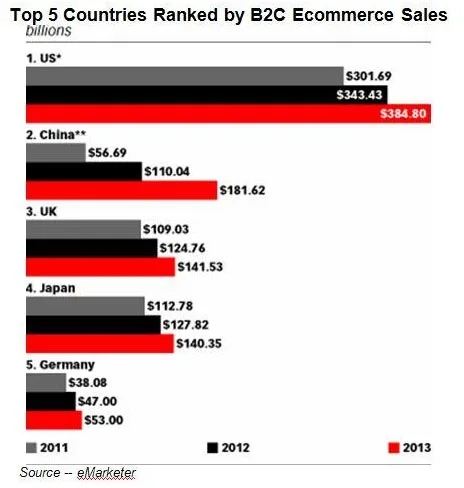 Online Buying – When etailing was first introduced, leading industry gurus and forecasters said that brick and mortar retail would diminish to the point where it became virtually unnecessary. It is true, etailing has grown and, for the most part, profitably. But it has also given a boost to conventional retail stores that are not only competitive but also provide immediate customer service/customer support.
Online Buying – When etailing was first introduced, leading industry gurus and forecasters said that brick and mortar retail would diminish to the point where it became virtually unnecessary. It is true, etailing has grown and, for the most part, profitably. But it has also given a boost to conventional retail stores that are not only competitive but also provide immediate customer service/customer support.
The challenge for marketing is really understanding what social media is, how it works/interacts, which avenue(s) to use, how to measure social media results … and what are the downsides.
Social media:
– provides an unfiltered view of consumer perceptions so firms can see what will impact the future of their business
– word-of-mouth is having a tremendous control over perception and acceptance
– user community sites and blogs provide valuable (if studied analytically rather than emotionally) user experience feedback
– can generate effective viral campaigns for products
– is an arena dominated (by a factor of five) by early adopters (revolutionaries)
– will become increasingly significant in influencing companies and products according to the revolutionaries
– provides a unique opportunity to connect with contemporaries and customers to gain feedback and learn from it
Social media is all about people.
It’s where people share opinions, insights, experiences and perspectives with others.
The demand, the interest, the need is growing in leaps and bounds.
Chicken Littles from time to time forecast the death kneel of the Web, a victim of its own success.
After all, Internet usage has more than doubled since 2015.
 Online Growth – People who are online creating and using/sharing content will continue to grow in leaps and bounds. While industrialized countries will still account for considerable growth, it is the emerging country populations that will quickly develop, distribute and enjoy content on a global scale.
Online Growth – People who are online creating and using/sharing content will continue to grow in leaps and bounds. While industrialized countries will still account for considerable growth, it is the emerging country populations that will quickly develop, distribute and enjoy content on a global scale.
You may complain about the volume of email and spam you have to deal with every day; but baby, you ain’t seen nuthin’ yet!
Traffic Growth
IPTV has gained a lot of traction in the past two years and is rapidly expanding.
VoIP shows considerable promise.
And as the MPAA and RIAA are quick to point out, peer to peer sharing is growing so fast they can’t hire enough lawyers to stop the flow.
As Abbott/Cox said in the Bourne Supremacy, “You’re in a big puddle of s***, Pamela, and you don’t have the shoes for it.”
A short time ago, blogs were the fast, meaningful, effective and cheap way to reach customers.
Today, the hot button is Tweets. The 140-character chats are the new marketing/sales/ communications breed of choice.
The dynamics of business as usual have changed so dramatically – internally and externally – management has lost its traditional chain of command control of messengers and messages.
Blogs, Tweets, Wikis and business/social nets give everyone in the organization the tools to work/play more efficiently, more effectively.
Work/leisure, colleague/competitor, customer/prospect – people move in/out of the networks, forcing us to rethink org charts and work/information flow.
It’s organic, its supermarketing, supercommunications in a realtime world.
The proponents of each avenue claim unbridled marketing success, but precisely pinpointing value and ROI in traditional metrics is difficult, if not impossible because it is impossible to find the beginning and end points.
Abbott explained it best when he said, “Unlucky. Collateral damage.”
As huge and as effective as email, posted communications/opinions and file transfers are, their demand on the Internet and their use is miniscule in comparison to the bandwidth entertainment will consume in the years ahead.
For most individuals and businesses, it is the online video opportunities that track the most interest and the most attention because the ability to attract and identify eyeballs is … HUGE!!!
Online and OTT (over the top) viewing is changing one of the entertainment/marketing communities’ most traditional (and profitable) means of reaching the “market.”
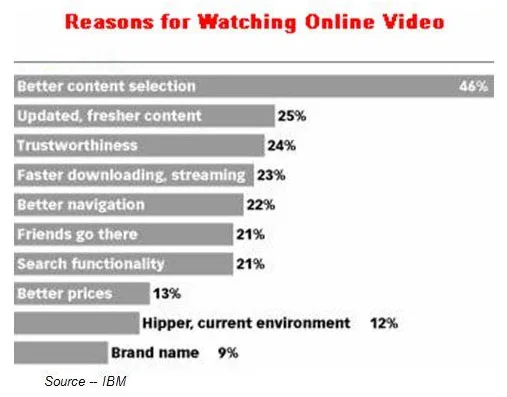 Online Videos – Today, the online user knows he/she can watch what they want, when they want, as even the most current movies, TV shows and personalized content is being made available on the web (legally and illegally). The key concern for broadcasters and Hollywood is how to monetize the opportunities.
Online Videos – Today, the online user knows he/she can watch what they want, when they want, as even the most current movies, TV shows and personalized content is being made available on the web (legally and illegally). The key concern for broadcasters and Hollywood is how to monetize the opportunities.
Some – primarily companies in this segment and their VCs – are proud to say that online video viewing will quickly eliminate conventional TV as rapidly as it killed print media.
Traditionals Live
They love to deride traditional media – print and TV. But these “ancient” forms of communications, news and entertainment are still important in building brand awareness.
Firms that choose one over the other don’t understand or acknowledge the dynamics of traditional media and how it integrates with new media.
For example:
– Media synergy is important. The use of three media was better than two, and two media was better than one
– The combination of TV and print provided more lift than TV plus online
TV; magazines produced the greatest awareness and each contributed more impact than online
– Print the most effective in increasing purchase intent
– Including a URL address in ads significantly increased web visits
– Offline media perform well in driving web traffic and search, often better than online media
– Each medium influences online behavior differently and plays a distinctive role
– “Qualified” search offers quite different and informative results than “total” search results
What management often overlooks is the fact that widgets and social media weren’t prepared for them to control their message to unsuspecting prospects.
Bourne had the right idea in explaining it when he said, “I’m gonna ask you some simple questions. You’re gonna tell me the truth or I swear to God I’m gonna kill ya.”
Ads may get consumers to your web site to learn more about the product, but their next stop in the purchasing process is to surf the web learning about people’s customer-service experience.
Straight Scoop
Use any search engine to find out about any product and thousands of online social media references appear … instantly!
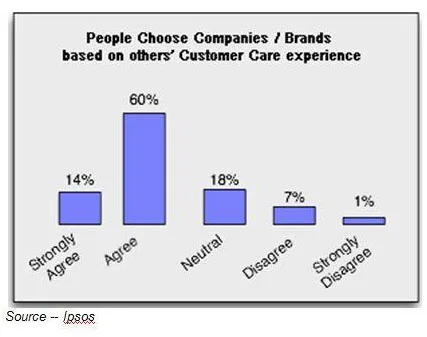 Opinions Count – Satisfied and dissatisfied customers, as well as information on problems and how they were resolved, can be found almost instantly by using your search engine. A few key words and hitting enter can expose the inner workings of a company, its products and the depth/quality of its customer support. Good news travels fast … bad news travels even faster and more widely.
Opinions Count – Satisfied and dissatisfied customers, as well as information on problems and how they were resolved, can be found almost instantly by using your search engine. A few key words and hitting enter can expose the inner workings of a company, its products and the depth/quality of its customer support. Good news travels fast … bad news travels even faster and more widely.
People who purchase note that:
- 74% choose companies/brands based on others’ customer-care experiences shared online
- 72% research companies’ customer care online prior to purchasing products and services at least sometimes
- 84% consider the quality of customer care at least sometimes in their decision to do business with a company
- 84% consider the quality of customer care in their decision to do business with a company at least sometimes
- 81% say blogs, online rating systems and discussion forums can give consumers a greater voice regarding customer care, but less than 33% say they believe that businesses take customers’ opinions seriously
Bite the Bullet
Firms like Amazon and Dell have found that leveraging social media to address customer care issues is just good business. And Dell learned the lesson the hard way when they first tried to manage and control their messages/communications their way.
Pamela Landy explained what these firms had learned when she said ever so nicely, “I was hoping you had some time for me.”
Knowing from first-hand input can save marketing people from a lot of sleepless nights … or worse.
The tough part is listening, responding (appropriately) and improving products and processes.
Consumers may like your ads, but they make their purchasing decisions based on peers.
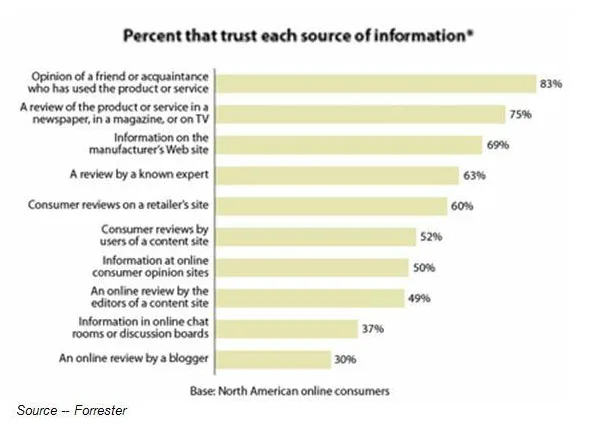 Trust – Almost everyone today does product features, availability and pricing searches on the web, even when they purchase the product/service at a local store. But even before the prospect walks into the store, he/she knows where all the beauty and blemishes are shown. They have read other customer reviews and use lists comments so they know the good, the bad and the ugly.
Trust – Almost everyone today does product features, availability and pricing searches on the web, even when they purchase the product/service at a local store. But even before the prospect walks into the store, he/she knows where all the beauty and blemishes are shown. They have read other customer reviews and use lists comments so they know the good, the bad and the ugly.
According to BIGresearch, instant messages, blogs and other social media have a greater influence in PC and CE product purchases.
To paraphrase advertising luminary David Ogilvy, “Advertising lights the fire, public relations fans the flame and widgets/social media whip it into a fire storm!”
Ignoring the influences that the company can’t control is foolhardy. The key to survival is to listen … respond … improve.
As Bourne said, “What were my words? What did I say? I said leave me alone.”